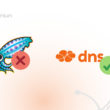The digital age has brought a true revolution in global connectivity. Mobile devices and the Internet of Things (IoT) are increasingly present in our daily lives, integrating our homes, workplaces, and cities. However, this expanded connectivity has also opened new doors for cybercrime , since as the number of connected devices increases, the attack surface available to criminals also expands. According to data from ABINC , the total number of connected mobile devices in the world in 2023 was estimated at approximately 41.76 billion, driven mainly by the growing adoption of Internet of Things (IoT) devices and the advancement of connectivity provided by the arrival of 5G. Therefore, cybersecurity in mobile and IoT devices is essential for businesses.
In recent years, we have observed a significant increase in cyberattacks targeting mobile and IoT devices, becoming a growing concern for businesses and governments. According to SonicWall's 2024 Mid-Year Cyber Threat Report malware on IoT devices increased by 107% in the first half of 2024, with these devices spending an average of 52.8 hours under attack . As new technologies are launched, new vulnerabilities also emerge that can be exploited by criminals. Thus, protecting these networks and devices becomes a race against time to ensure data integrity and system security.
In this scenario, it is crucial that companies invest in strengthening their digital infrastructure, protecting their devices and networks. In other words, protection against DNS-based threats is essential to combat cyberattacks that can compromise critical infrastructure and disrupt services.
The explosion of IoT and the new frontier of cybercrime
Thus, the expansion of IoT (Internet of Things) has been exponential. According to Juniper Research , the global base of IoT devices connected to mobile networks is estimated to grow by 90% in the next four years , jumping from 3.4 billion to 6.5 billion by 2028. This explosion of connectivity raises cybersecurity in mobile and IoT devices to a new level of challenges, as each connected device represents a potential gateway for cybercriminals.
One of the biggest challenges in IoT is the lack of uniformity and standardization in security . Devices from different manufacturers are often developed with little attention to security strategies, using encryption technologies and default credentials. These characteristics make them easy targets for criminals seeking to exploit vulnerabilities.
Furthermore, the enormous diversity of available IoT devices contributes to the complexity of security strategy, since each manufacturer adopts proprietary solutions that are not compatible with each other. This lack of standardization makes it difficult to implement large-scale protection measures, leaving many networks exposed to cyberattacks.
Security challenges in IoT: lack of standardization and scalability
The security of IoT devices faces significant challenges due to a lack of standardization. The wide variety of manufacturers and models leads to different levels of protection, often inadequate and outdated. Devices frequently employ outdated encryption and default credentials, making them vulnerable targets for cyberattacks. The lack of a uniform standard hinders the comprehensive application of effective security measures, as there is no single approach that can be adopted by all devices.
Furthermore, the scalability of security solutions is a growing concern. As the number of connected devices grows rapidly, it becomes increasingly complex to manage and protect each one. Many older devices continue to operate without security updates, and the existing infrastructure may not be able to handle the amount of data generated. Without an effective strategy to continuously monitor and update these devices , IoT networks remain susceptible to attacks that can compromise the integrity of critical systems and expose sensitive information.
Furthermore, the use of IoT has also broadened the attack surface. Criminals, who previously focused on corporate computers, can now also access security cameras, smart refrigerators, and IoT-controlled thermostats. Due to these factors, the security of these devices cannot be neglected, making the protection of the interconnected networks a priority.
Mass connectivity: the challenges of large-scale security
With billions of devices connected globally, ensuring the security of these mobile and IoT devices has become a major challenge. Large-scale connectivity also increases the complexity of security tools, as each device introduces new vulnerabilities that need to be managed.
IoT networks connect different devices, from sensors in factories to health monitoring systems. Each connected device can weaken the security of the network as a whole. Furthermore, many IoT devices have limited memory and processing resources, hindering the implementation of more robust security measures.
Another concern relates to the large-scale monitoring and management of these devices. With the increased use of these tools, organizations struggle to keep track of resources and monitor activities adequately. This lack of control creates vulnerabilities that can be exploited by attackers, making it necessary to strengthen network security through DNS protection , for example.
Critical sectors in the crosshairs: the impacts of attacks on health and other areas
According to the 2023 Healthcare Data Cyber Breach Report by Critical Insight , although the year is showing a downward trend in breaches, the number of compromised individual health records reached an all-time high in just six months. The report, based on an analysis of data breaches reported by healthcare organizations in the United States, found that vulnerabilities in these institutions fell by 15% in the first six months of 2023. However, there was a 31% increase in the number of compromised individual records, impacting 40 million people.
In 2021, ransomware attacks compromised hospitals in Europe and the United States, resulting in the disruption of essential services and the theft of sensitive data. The vulnerability of IoT-connected medical devices, such as insulin pumps and heart rate monitors, poses a direct risk to life , as these tools can be remotely manipulated by attackers.
The vulnerability of the energy sector
Similarly, the energy sector also faces significant risks. A significant example was the attack on Ukraine's power grid in 2015, which resulted in power outages for over 200,000 people.
According to IBM's 2023 X-Force report , the energy sector ranks third among the most targeted sectors for cyberattacks. The energy sector remains particularly vulnerable to such threats, impacting its critical infrastructure due to the complexity of the tools and systems used in the sector.
These incidents highlight the importance of investing in robust security, with a greater focus on protecting connected devices and the networks that support them.
Retail and e-commerce in the spotlight
E-commerce and retail companies face significant cybersecurity challenges due to the large daily volume of transactions and personal data. Customer information, such as credit card details, addresses, and purchase histories, is extremely valuable to cybercriminals. Attacks like phishing , malware , and identity theft are common in this sector, as platforms frequently handle large volumes of sensitive data that can be monetized. Furthermore, security breaches in websites or payment systems can lead to large-scale financial fraud, affecting both businesses and consumers.
Another critical vulnerability in e-commerce and retail is the reliance on third parties, such as payment providers, delivery platforms, and hosting services. When these third-party companies lack robust security measures, they end up opening doors to intrusions that can affect the entire service chain. This, combined with the growing demand for convenience and speed in online shopping, often leads to security breaches in fast-paced processes.
Implementing technologies such as multi-factor authentication and end-to-end encryption are some of the solutions that can mitigate these risks, but many companies have not yet adopted these practices consistently.
The challenge of privacy in devices and IoT
The increasing adoption of mobile and IoT devices has made data privacy one of the biggest challenges for businesses. Connected devices collect a huge amount of sensitive information , which, when poorly protected, can fall into the hands of criminals.
Improper configurations and a lack of software updates make these devices vulnerable, allowing criminals to access corporate networks, collect data, or violate user privacy.
Mitigating these risks involves investing in cutting-edge encryption solutions, monitoring, and strong authentication . A DNS firewall also plays a crucial role, helping to block unauthorized access and preventing data from being intercepted or transmitted to malicious servers. Protecting data privacy on mobile and IoT devices requires an integrated approach, combining security technologies with stricter privacy policies.
State-of-the-art cryptography
End-to-end encryption (E2EE) is a security strategy that ensures only the sender and recipient can access the data , making it impossible for third parties to intercept the information. In this process, messages or data are encrypted at the point of origin and only decrypted at the point of destination, guaranteeing that any intermediary user, even if they have access to the content, cannot read it. This technology can be observed in messaging applications and communication platforms, which use this method to increase the privacy of interactions.
This type of encryption is vital not only for protecting privacy but also for ensuring the integrity of transmitted information. Therefore, any attempt to intercept information will be immediately detected. In an increasingly connected digital environment, end-to-end encryption becomes one of the main defenses against cyberattacks.
Monitoring
System monitoring tracks activity on networks, servers, applications, and devices to ensure security, performance, and compliance. By detecting and reporting any anomalous activity or potential threats in real time, monitoring enables rapid responses to problems , preventing greater damage such as service interruptions or data compromise.
In the field of cybersecurity, continuous monitoring is crucial for detecting attacks in their early stages and preventing greater damage. Furthermore, monitoring is not limited to security alone; it also ensures that systems and networks are functioning efficiently. Additionally, this practice is crucial for organizations to meet compliance requirements with security regulations such as ISO 27001, GDPR, and LGPD.
Strong authentication
Strong authentication, also known as multifactor authentication (MFA), refers to the use of more than one method to verify a user's identity before allowing access to systems or information. This typically combines something the user knows (password or PIN), something the user possesses (a device such as a token or mobile phone), and something inherent to the user (biometrics, such as fingerprints or facial recognition).
Currently, strong authentication is essential for sectors that handle sensitive information, such as banks and technology companies. It improves protection against intrusions and vulnerabilities in a constantly evolving cyber threat landscape.
Sophisticated attacks: deepfakes and phishing threaten critical businesses
Technological advancements have led to increasingly sophisticated cyberattacks, employing more complex tactics to deceive users and businesses. Deepfakes and phishing are notorious examples of this evolution.
Deepfakes are videos, audios, or images created using artificial intelligence (AI) that manipulate or replace a person's face or voice realistically, managing to deceive the public by making it seem as if a person or personality said or did something that, in reality, did not happen. Phishing, on the other hand, is a fraudulent practice where a cybercriminal attempts to trick a user into giving away sensitive data, such as passwords, credit card numbers, or personal information.
Mitigating these risks can be achieved through robust, multi-layered solutions . In addition to raising awareness and training employees, you can explore advanced fraud detection and biometric authentication technologies as effective responses.
Social engineering 2.0: the dangerous SMS phishing scam
Social engineering has evolved alongside technology, and now phishing attacks, which have always been harmful, also utilize more sophisticated channels, such as text messages and phone calls. Known as smishing , SMS phishing attacks aim to trick users into revealing confidential information or downloading malware onto their mobile devices. Companies of all sizes are frequent targets, with criminals posing as suppliers or executives.
Smishing is particularly effective because it exploits people's trust in mobile devices. Many users end up believing that text messages are more secure than emails, making them less vigilant. Furthermore, mobile devices generally have fewer layers of protection than conventional systems.
To combat this threat, organizations need to invest in security solutions that go beyond the traditional ones. A DNS firewall, for example, can block malicious links and prevent redirection to fake websites, protecting mobile devices and IoT from threats.
Deepfakes: the new face of cybercrime and its real-world impacts
Deepfake is a media manipulation technique that uses artificial intelligence (AI) to develop highly realistic fake videos, images, or audio . They represent a growing threat in the cybersecurity landscape. With the help of artificial intelligence, it's possible to create extremely realistic videos and audio using the voices of public figures or company executives. Criminals have used these forgeries to defraud companies, extort money, and manipulate public opinion.
It's important to remember that the impact of deepfakes goes far beyond financial damage. They have the potential to compromise trust in information circulating in the digital environment, creating an atmosphere of chaos and misinformation. Criminals can use deepfakes to simulate conversations between executives and trick companies into carrying out fraudulent transactions.
To meet this challenge, companies must adopt an approach that combines technology and awareness. Using authentication tools , offering ongoing training, and protecting DNS to prevent access to phishing and deepfake websites are essential to safeguarding the integrity of communications and data security.
The role of DNS firewalls and defense strategies
As we have seen, security in mobile and IoT devices presents unique and complex challenges. However, a comprehensive approach, combining robust cybersecurity and DNS protection, can significantly reduce risks.
DNS protection is essential for blocking access to malicious websites and preventing data from being transmitted to compromised servers. It's a crucial defense against various cyber threats, ensuring the security of networks and connected devices.
Furthermore, implementing good security practices, such as using encryption, strong authentication, and regular software updates, can help mitigate many of the risks associated with mobile and IoT devices.
Cybersecurity in mobile and IoT devices
Given all the concerns related to protecting these tools, cybersecurity in mobile devices and the Internet of Things (IoT) has become a growing concern as the number of internet-connected devices increases. With the significant expansion of smartphone and smart device use in businesses, vulnerabilities are also multiplying.
The lack of consistent security standards for many IoT devices also considerably worsens the situation. The lack of software updates and vulnerability patches leaves a large number of devices exposed to cyberattacks. In addition to using smarter security tools, user awareness of risks and cybersecurity best practices is crucial, helping to reduce the impact of growing threats in this increasingly connected world.
Therefore, investing in advanced technologies and maintaining a proactive stance towards cybersecurity is fundamental to protecting data and ensuring the integrity of business operations. With the constant evolution of cyber threats, companies must remain vigilant and adopt effective strategies to protect their networks and devices.











